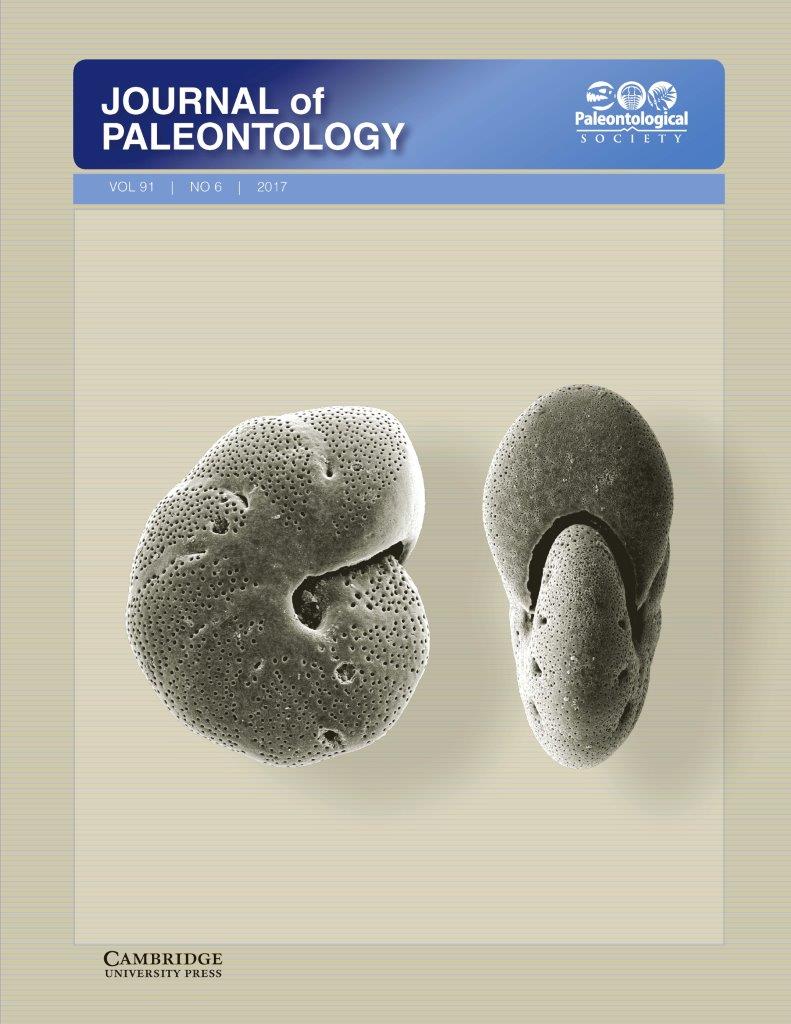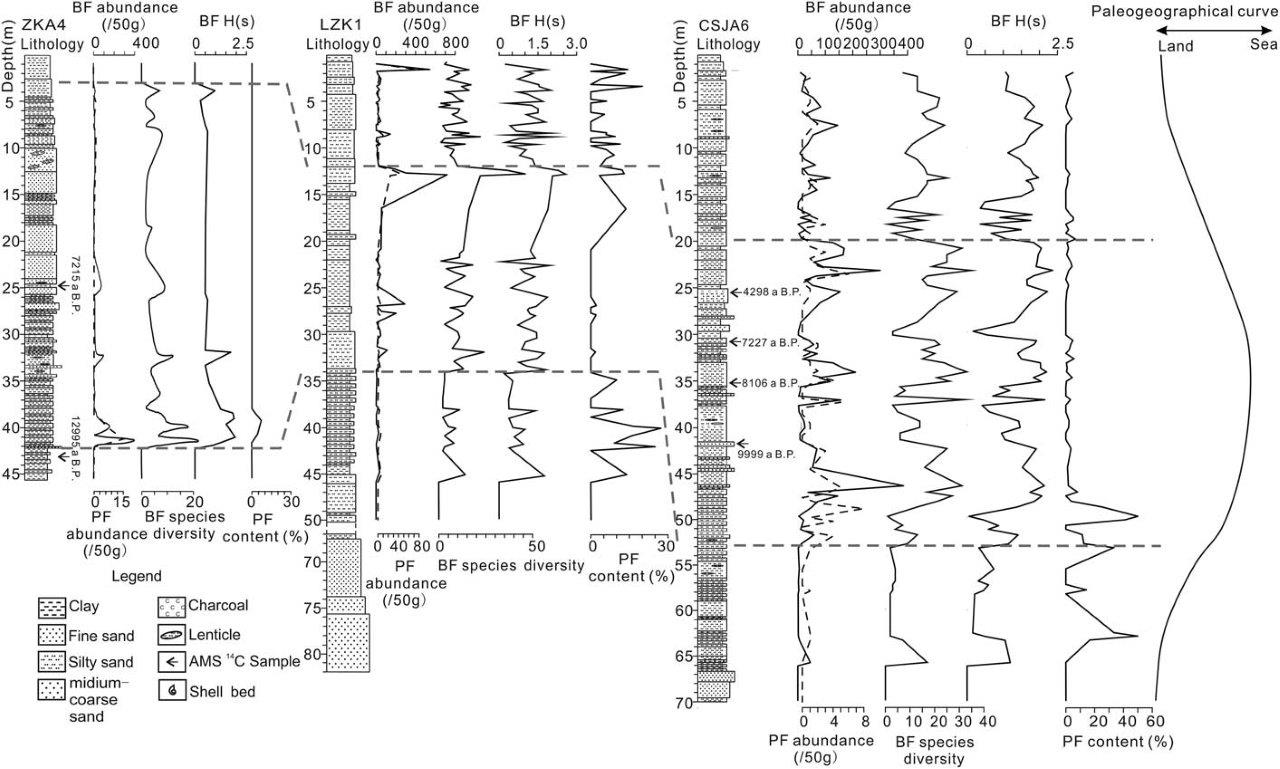During the last glacial period, the global mean sea level dropped about 120 meters, which caused the vast explosion of the shelf area, including in the East China Sea. Due to the sea level drop, the incised Yangtze paleo-valley was 80 meters deeper than present, where thick sediment has been accumulated during the post glacial stage. Such a thick record provides sufficient sedimentary information about the sea level and climatic changes.
The last transgression during the Quaternary in the East China is called “Ammonia transgression”, which is widely distributed in this region. Based on sediments of Core (ZKA4, LZK1 and CSJA6) from the incised Yangtze paleo-valley, A total of 19 genera (26 species) of the benthic foraminifers were described and down-core variations of the foraminiferal fauna during the “Ammonia transgression” were discussed in recent published paper of Journal of Paleontology [91(6): 1102-1122, https://doi.org/10.1017/jpa.2017.66] with benthic foraminiferal SEM photo of Melonis barleeanum as the front matter.
The foraminiferal fauna evolved from Ammonia beccarii var. and Florilus decorus assemblage with lower abundance and diversity, to abundant and diverse Ammonia beccarii var. and Elphidium advenum assemblage, and to the Ammonia beccarii-Elphidium magellanicum assemblage during the post-glacial period in the sections, revealed an increased seawater depth during the early post-glacial period and slight decrease since the Middle Holocene in this region.
In addition to documenting the post-glacial sea level fluctuations, the benthic foraminifers also reflect a warmer climate during the early Middle Holocene. The foraminiferal difference between the different sites implies that the vicinity of upriver Core ZKA4 was first out of the influence of sea water during the late Holocene.
The study was mainly made by Dr. KE Xue from China University of Geosciences (Wuhan) and Prof. LI Baohua from Nanjing Institute of Geology and Palaeontology, Chinese Academy of Sciences, which was supported by National Natural Science Foundation of China, Strategic Priority Project of the Chinese Academy of Sciences, and the Foundation of Geological Survey of China.
More information about the paper at: Ke, Xue, Li, Baohua*, Zhang, Zongyan, Wei, Yi, Hu, Fei, Fan, Dongwen, Sun, Li, Xie, Jianlei, Yu, Junjie, and Yao, Huazhou, 2017. Post-glacial Foraminifera of the incised Yangtze paleo-valley and paleoenvironmental implications. Journal of Paleontology, 91(6): 1102-1122.

SEM photo of Melonis barleeanum (23.2-23.3m, Core CSJA6, Nantong, Jiangsu Province, China), front matter of Journal of Paleontology, volume 91, No. 6.

Post-glacial Variation of Lithology, benthic foraminiferal abundance, diversity, and H(s), planktonic foraminiferal content in Cores ZKA4, LZK1, and CSJA6 from the incised Yangtze paleo-valley with reconstructed paleogeographic curve.

